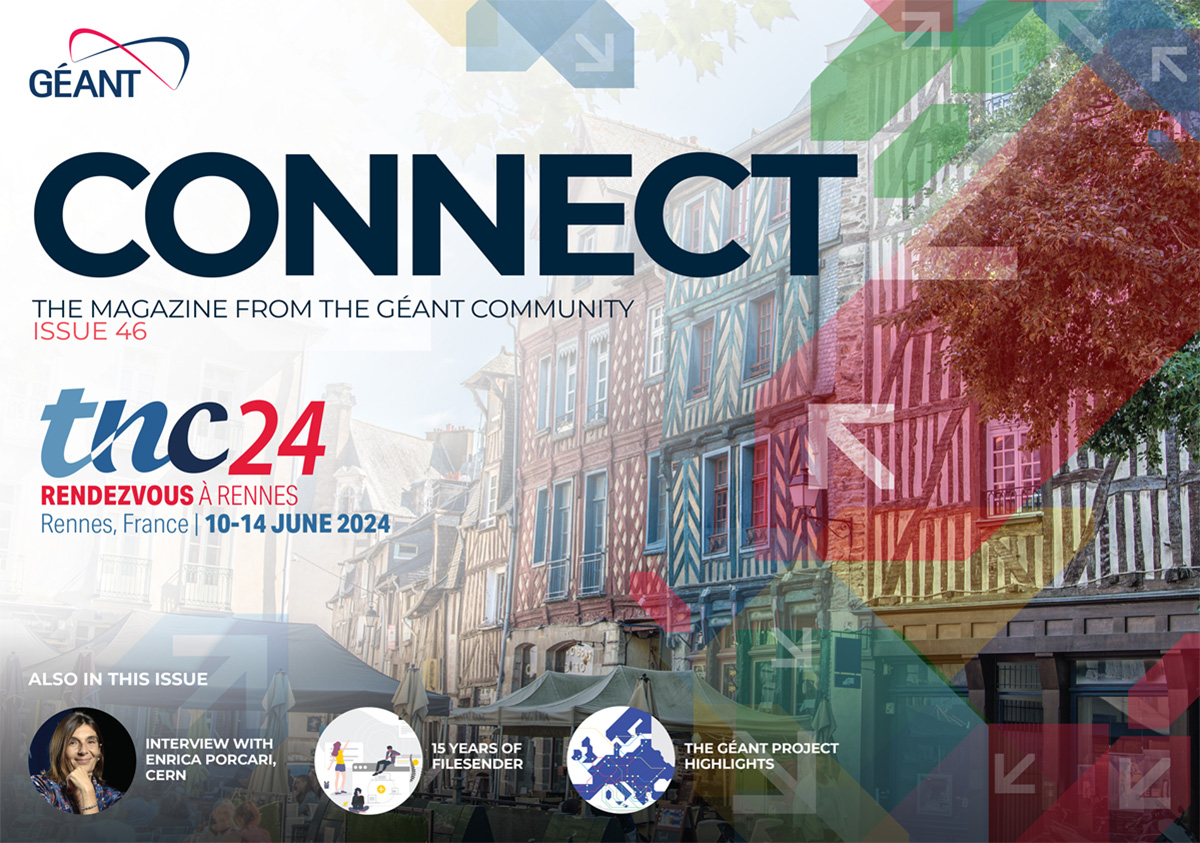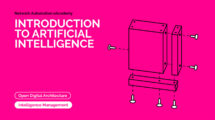Virtually everyone knows about the discovery of the Higgs Boson by CERN and how LHCONE has supported that. But indeed, within the fields of physics, astrophysics and cosmology there are way more experiments that rely upon the LHCONE network. Here is an overview of the science collaborations that use LHCONE today.
ATLAS – Pushing the frontiers of knowledge (atlas.cern)
ATLAS is a general-purpose particle physics experiment at the Large Hadron Collider (LHC) at CERN. It is designed to exploit the full discovery potential of the LHC, pushing the frontiers of scientific knowledge. ATLAS’ exploration uses precision measurement to push the frontiers of knowledge by seeking answers to fundamental questions such as: What are the basic building blocks of matter? What are the fundamental forces of nature? What is dark matter made of? ATLAS is the largest detector ever constructed for a particle collider: 46 metres long and 25 metres in diameter. Its construction pushed the limits of existing technology. ATLAS is designed to record the high-energy particle collisions of the LHC, which take place at a rate of over a billion interactions per second in the centre of the detector. More than 100 million sensitive electronics channels are used to record the particles produced by the collisions, which are then analysed by ATLAS scientists. ATLAS is a collaboration of physicists, engineers, technicians, students and support staff from around the world. It is one of the largest collaborative efforts ever attempted in science, with over 5,500 members and almost 3,000 scientific authors. The success of ATLAS relies on the close collaboration of research teams located at CERN, and at member universities and laboratories worldwide.
CMS – Compact Muon Solenoid (cms.cern)
The CMS Collaboration brings together members of the particle physics community from across the globe in a quest to advance humanity’s knowledge of the very basic laws of our universe. CMS has over 4,000 particle physicists, engineers, computer scientists, technicians and students from around 240 institutes and universities from more than 50 countries. The collaboration operates and collects data from the Compact Muon Solenoid, one of the general purpose particle detectors at CERN’s LHC. Collaborators from all over the world helped design and fabricate components of the detector, which were brought to CERN for final assembly. Data collected by CMS are shared with several computing centres via the Worldwide LHC Computing Grid. From there, they are distributed to CMS institutions in over 40 countries for physics analysis. In keeping with CERN’s commitment to open access for high-energy physics, the scientific results from CMS are shared openly with the world.
LHCb collaboration (lhcb.web.cern.ch)
LHCb is an experiment set up to explore what happened after the Big Bang that allowed matter to survive and build the universe we inhabit today. 13.8 billion years ago, the universe began with a bang. Crammed within an infinitely small space, energy coalesced to form equal quantities of matter and antimatter. But as the universe cooled and expanded, its composition changed. Just one second after the Big Bang, antimatter had all but disappeared, leaving matter to form everything that we see around us — from the stars and galaxies to the Earth and all life that it supports.
From the 10 million proton collisions every second, LHCb records the data from just 2,000. The job of choosing the most interesting collisions is carried out by an electronic trigger that performs an extremely rapid analysis of the signals from a few key parts of the detector. In just 4 millionths of a second the trigger must take a decision or data are lost. This is just one aspect of the computing challenges of LHCb. The amount of information recorded is around 10 gigabytes per second, enough to fill approximately 55,000 CDs per hour. Data from the experiment is then replicated throughout a network of more than 100 computing centres around the world. Tens of thousands of computers are able to analyse the data simultaneously, thanks to the global Grid computing infrastructure supported by the World LHC Computing Grid collaboration. The LHCb is a truly international collaboration. About 1,400 scientists, engineers and technicians representing 86 different universities and laboratories from more than 18 countries are involved in the project.
ALICE (A Large Ion Collider Experiment) (alice.cern)
ALICE is a detector dedicated to heavy-ion physics at the Large Hadron Collider (LHC). It is designed to study the physics of strongly interacting matter at extreme energy densities, where a phase of matter called quark-gluon plasma forms. For part of each year the LHC provides collisions between lead ions, recreating in the laboratory conditions similar to those just after the Big Bang. Under these extreme conditions, protons and neutrons “melt”, freeing the quarks from their bonds with the gluons. This is quark-gluon plasma. The ALICE collaboration studies the quark-gluon plasma as it expands and cools, observing how it progressively gives rise to the particles that constitute the matter of our universe today.
Belle II (belle2.jp)
In the Big Bang, matter and antimatter should have been created in equal amounts. But why is the universe today filled almost only with matter? Physicists attribute the different behaviour of matter and antimatter to the violation of the so-called CP symmetry. But the extent of the observed CP violation is not sufficient to explain the actual excess of matter in the universe. The Belle II experiment at the SuperKEKB accelerator in Japan aims to solve this great mystery of particle physics. The Belle II collaboration consists of over 1,100 physicist and engineers from 122 institutions in 27 countries and relies upon the high performance networks of NRENs across the world to distribute and share the huge volumes of data produced.
XENON (xenonexperiment.org)
The XENON dark matter research project, operated at the Italian Gran Sasso National Laboratory, is a deep underground detector facility featuring experiments aiming to detect hypothetical dark matter particles. The experiments aim to detect particles in the form of weakly interacting massive particles (WIMPs) by looking for rare nuclear interactions in a liquid xenon target chamber.
Between 2006 and 2012, CERN has directed a beam of muon neutrinos from the CERN SPS accelerator to the Gran Sasso lab, 730Km away. These were detected by the OPERA and ICARUS detectors, in a study of neutrino oscillations which improved on the results of the Fermilab to MINOS experiment and demonstrate that neutrinos have mass.
Pierre Auger Observatory (www.auger.org)
The Pierre Auger Observatory is located on the vast plain known as the Pampa Amarilla (yellow prairie) in western Argentina. It studies the highest-energy particles in the universe, which hit the Earth from all directions, so-called cosmic rays. Cosmic rays with low to moderate energies are well understood, while those with extremely high energies remain highly mysterious. By detecting and studying these rare particles, the Pierre Auger Observatory is tackling the enigmas of their origin and existence. The Pierre Auger Collaboration includes over 500 scientists from Argentina, Australia, Belgium, Brazil, Columbia, The Czech Republic, France, Germany, Italy, Mexico, the Netherlands, Peru, Poland, Portugal, Romania, Slovenia, Spain, and the USA.
LHCONE – A model of network evolution in the 21st Century
One of the defining characteristics of these collaborations is the need to rapidly share huge volumes of data with hundreds of scientists around the world. For this the LHCONE network is ideally positioned. The LHCONE network overlay service is by far the largest multidomain service provided to the global Research and Education user community. It was created in response to the evolving needs of the LHC experiments and has grown from a small-scale technical exercise to today’s global service. The LHCONE service is currently deployed by 40 national regional and intercontinental R&E network operators, connecting more than 150 sites, in four continents. This network replaces the original hybrid private/shared topology initially developed in the late 1990s which rapidly became unfit to adapt to the changing profile of data processing in the community, which had shifted in response to both the increased data production of the LHC and the different ways this data was being used. The profoundly-changed computing model had the effect of bringing a lot more pressure on the network, not just in terms of traffic, but also the added capabilities required to allow for a more effective use of the increased capacity, primarily on the long-distance geographic links but also on the access links to the sites.
The answer to these new sets of requirements led to the LHC Open Network Environment (LHCONE) concept. Created at a workshop organised by Caltech and CERN in June 2010, and starting with a pilot with a small number of participating sites, LHCONE quickly grew organically to include the major LHC computing sites and the R&E network operators in all regions of the world.
As of today, LHCONE is implemented by 33 NRENs, four regional and three intercontinental RENs, spanning four continents (Europe, Asia, North and South America, Australia). Currently, over 150 sites are connected to LHCONE. The use of the network has also been expanded from the original four LHC experiments to include all the experiments described here and many more. This widening of the scope allows the LHCONE infrastructure to be shared across a wider community, simplifying the operations of these other particle physics experiments and reducing duplication and costs for sites involved in multiple experiments. LHCONE stands as a remarkable example of the benefits of international collaboration between NRENs and RRENs in order to support the rapidly- changing requirements of advanced research.
To find out more about the evolution of and technology behind the LHCONE network visit connect.geant.org/LHCONE

Read or download the full magazine here







